Today I would like to introduce you to a plant that you have probably seen a thousand times. Perhaps you have never taken a closer look at it because it is such a natural part of our lives and appears in the fields every summer. At least that’s how it used to be. We are talking about the poppy.
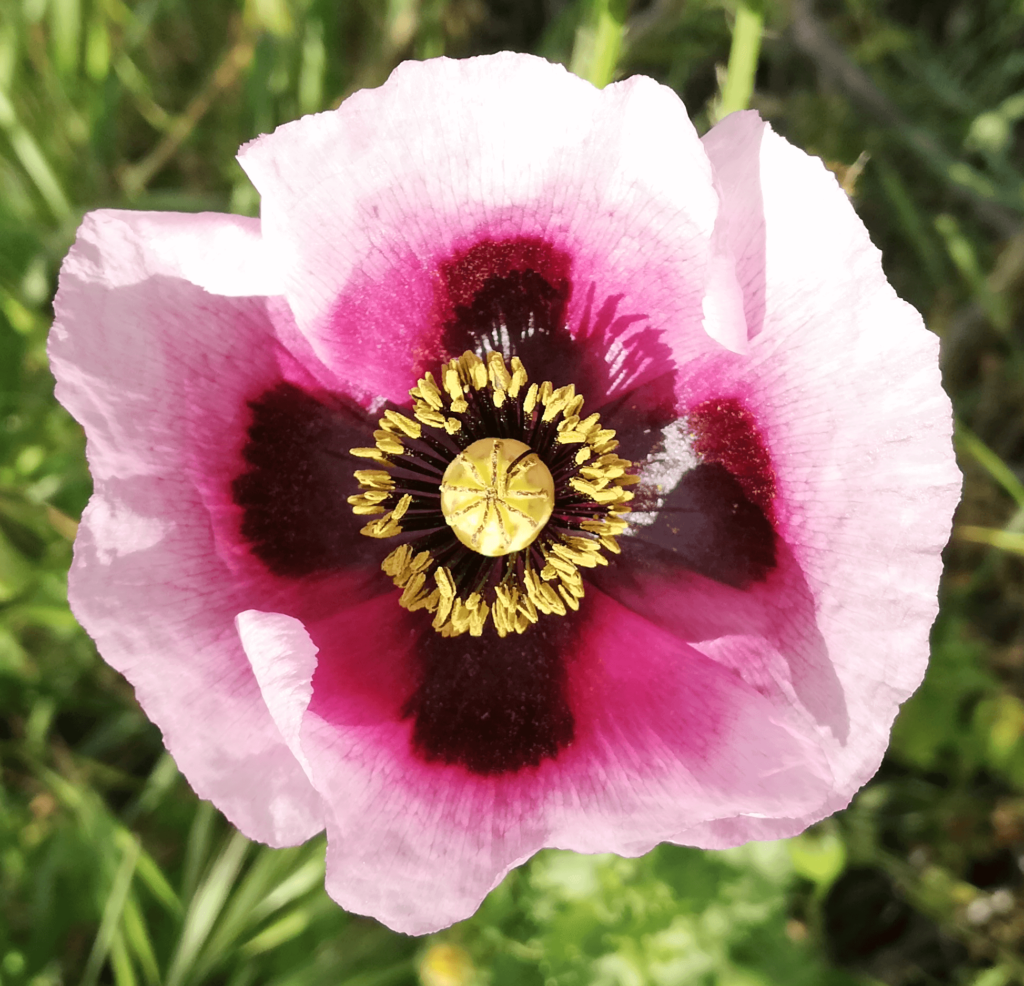




In my childhood it speckled the fields red, with blue cornflowers in between. It got the German name “Klatschmohn” because wind and rain make its flowers clap together. Today you can hardly find any flowers among the grain because they spray everywhere. Very sad, but that is another topic.
The german name for poppy is “Mohn” and comes from the Middle High German “Mahn”, which developed from the Germanic “Magan”. The Latin generic name “Papaver” comes from “papare”, which translated means “to eat”. Not because the plant was eaten at that time, but because the ancient Romans stirred poppy juice into their children’s porridge to put them to sleep.
Poppies were cultivated more than 5,000 years ago and are still cultivated today for the pharmaceutical industry and for their edible seeds. Of course, there are also small-scale cultivars in nurseries for decorative use in the garden.
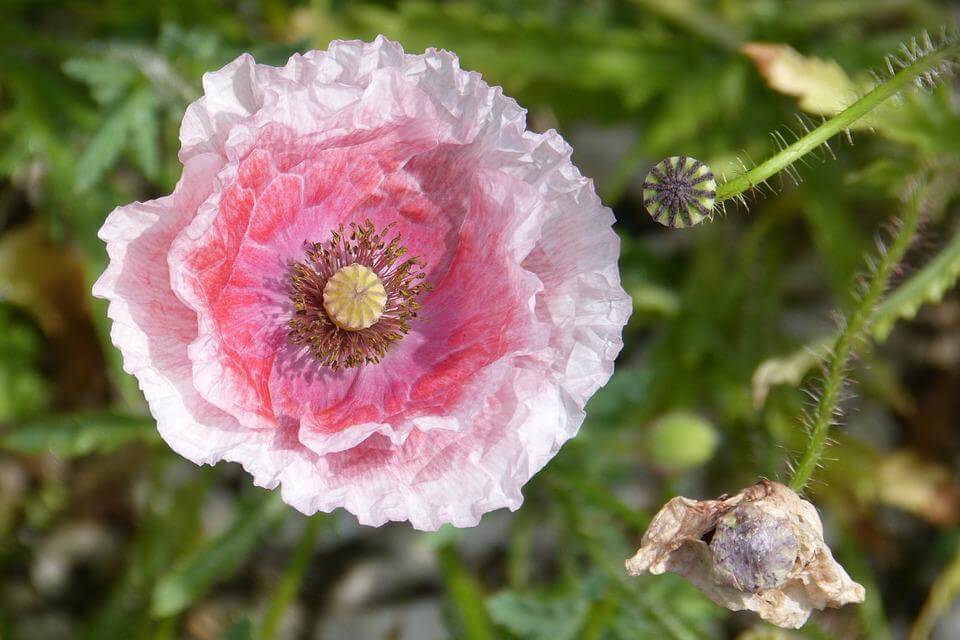
There are about 120 different varieties of poppy and they look very different. The colour spectrum ranges from red and pink to white, purple and orange. Some species are only annuals, but there are also biennial and perennial plants. What they all have in common is the yellowish or white milky sap, which is poisonous and, in the case of the opium poppy, can be processed into opium.
The fruits of the poppy look like a roundish jar with a pretty star-shaped lid. Just below the lid are openings all around. When the capsules are ripe and the colour has changed from green to a light, woody brown, the wind lets the small black seeds trickle out of them, like from a salt shaker.
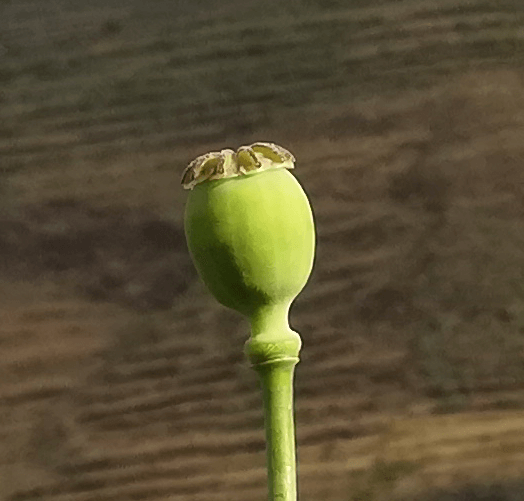




Apart from the corn poppy (Papaver rhoeas), the opium poppy (Papaver somniferum) is of course very well known. It has been cultivated in the eastern Mediterranean for thousands of years, both for its edible seeds and for drug extraction. The immature capsules are scratched to let the white milky sap out, which is then collected dried. It contains various alkaloids, including morphine and codeine. These are hardly or not at all found in other poppy varieties, for example in the corn poppy, only in the opium poppy. The ripe capsules yield the well-known black seeds, which are traditionally used for baking and cooking.
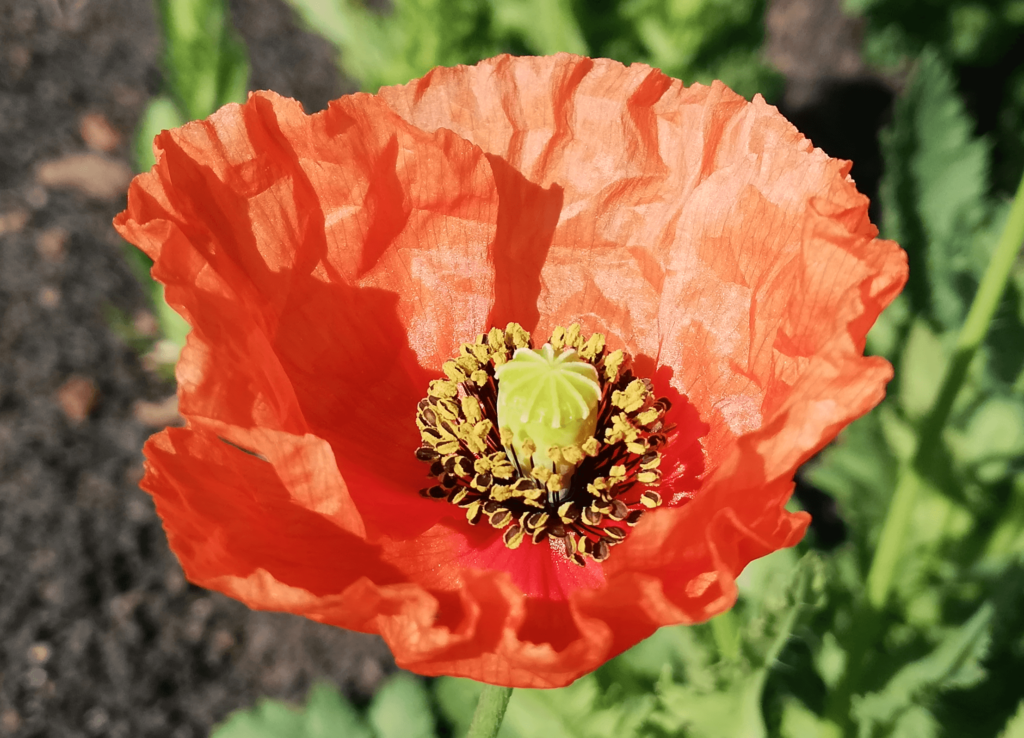
When poppies were included in the Narcotics Act, cultivation came to an abrupt end. Today, even a single plant of the opium poppy in the garden is punishable and larger cultivation requires the approval of the Federal Opium Agency. The variety, which is rich in active substances, is only approved under extreme conditions and good surveillance. However, there are also three low-morphine (< 0.02 % morphine) opium poppy varieties that can be cultivated with permission. Otherwise we would have no poppy seeds to bake with.
A good friend of mine, who has travelled a lot and never ceases to amaze me with her extraordinary knowledge, told me a few years ago how you can visually tell if a poppy plant has a high morphine and codeine content. You have to look at the stem of the flower! If it is very hairy, this is an indication that it is a “harmless” plant, so to speak. But if the stem is smooth and has hardly any hairs, the morphine and codeine content is probably quite high. The explanation is amazingly simple: the plant protects itself from small crawling animals by its hairiness. The more hairs, the more difficult it is for them to reach the flowers or the fruit, which are of existential value because of reproduction. But if the morphine content is high, this protection is superfluous. Because as soon as a small animal nibbles somewhere on the plant, it falls to the ground completely dizzy. I don’t know if this information is true. I couldn’t find any confirmation on the internet. But I like the theory. And if I ever see a little beetle zigzagging through the world, I’ll look to see if there’s a hairless poppy nearby.
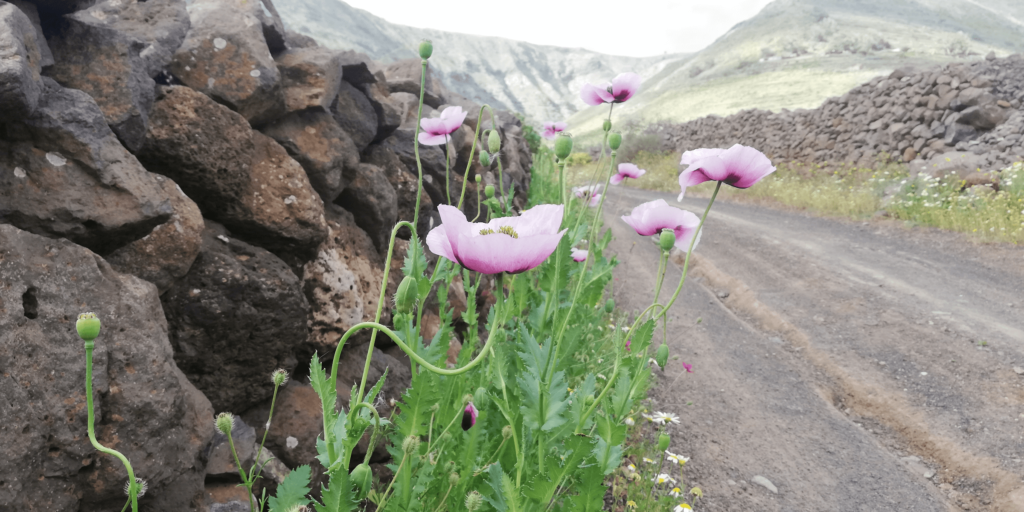
In Lanzarote, the wild poppy blossoms from April. Sometimes a little earlier, sometimes a little later, depending on the weather. In a good year with sufficient spring rain (such as 2021), the slopes in the north of the island are transformed for about three weeks into a brightly coloured sea of flowers that sway in the wind, their colours changing. Often large areas are covered with waist-high delicately-flowering poppies, which contrast beautifully with the small yellow flowers of the wild mustard. But a smaller bright red poppy also grows sporadically in between. Especially in the early morning hours, the delicate petals shimmering through have their very own magic.
I have often sat down in front of the plump buds and waited for them to open before my astonished eyes with the sun rising in the sea. Like a hopping butterfly that needs all its strength to strip off the protective sheaths and smooth the wrinkled delicate wings. The beauty takes my breath away every time.



In Germany, when the poppies are in bloom, I often go to Germerode, on the Meissner, in the Frau-Holle-Land Geo-Nature Park. Huge fields of poppies have been planted there for many years and you can spend the whole day enjoying the riot of colour on the extensive hiking trails. However, last year (2021) only the official large trails were open and it was recommended to postpone the poppy holiday until this year.
On this (german) page you can find out exactly how things stand at the moment and get a small foretaste:
And here you can go directly to the poppy blossom picture gallery Germerode:
In case you are really planning to go to the beautiful Meißner region, to Frau-Holle-Land, I would like to tell you an absolute insider tip:
the “Besenwirt in Vierbach”
Actually, Harry, the owner, is a ceramist and you can also admire and buy his pottery there. But that’s not what we’re talking about here. Harry is a gifted cook and lives out his vocation there, in a romantic old farmhouse. When I want to indulge myself in a real culinary experience, I let myself be invited there. There is only room for a few people. Harry cooks for you personally, so to speak. With a lot of love and creativity.
You sit on a small covered veranda, directly in front of the open kitchen door, and you can hear Harry working quietly in the background. The surroundings have great rural charm. You notice everywhere in the details that the owner of the house is an artist. But enough gushing. Maybe I’ll dedicate an extra article to the Besenwirt one day, with lots of photos.
But here is the most important thing: his telephone number. Because it is absolutely advisable to announce yourself before a visit.
The website of Harry, the Besenwirt in Vierbach:
His telephone number: +49 (0) 5651 99 29 12
But if you can’t come to Germerode for the poppy blossom, don’t be sad. Next year the poppies will bloom again. Until then, you can treat yourself to a home-made poppy treat at home. Maybe you still have some poppy seeds left over from Christmas baking (or you bought some fresh poppies in Germerode after strolling through the sea of flowers), so here’s a link to 20 wonderful poppy recipes. Have fun trying them out and enjoy them.
Click here to go to the “springlane” page, with poppy seed recipes:
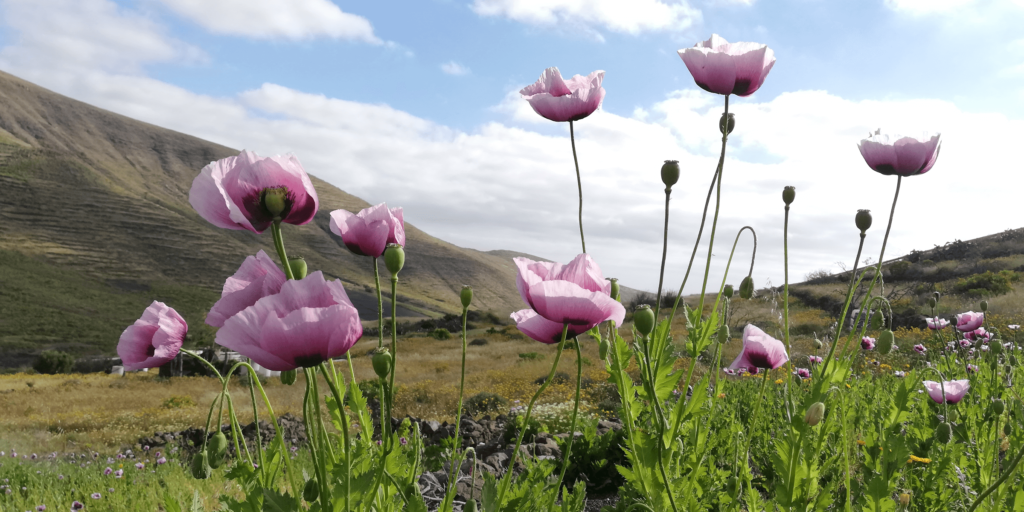
Mohn Mohn Mohn Mohn Mohn Mohn Mohn Mohn Blume Blume Blume Blume Blume Germerode Germerode Germerode Germerode Germerode Mohn Mohn Mohn Mohn Mohn Mohn Mohn Mohn Blume Blume Blume Blume Blume Germerode Germerode Germerode Germerode Germerode Mohn Mohn Mohn Mohn Mohn Mohn Mohn Mohn Blume Blume Blume Blume Blume Germerode Germerode Germerode Germerode Germerode Mohn Mohn Mohn Mohn Mohn Mohn Mohn Mohn Blume Blume Blume Blume Blume Germerode Germerode Germerode Germerode Germerode Mohn Mohn Mohn Mohn Mohn Mohn Mohn Mohn Blume Blume Blume Blume Blume Germerode Germerode Germerode Germerode Germerode Mohn Mohn Mohn Mohn Mohn Mohn Mohn Mohn Blume Blume Blume Blume Blume Germerode Germerode Germerode Germerode Germerode Mohn Mohn Mohn Mohn Mohn Mohn Mohn Mohn Blume Blume Blume Blume Blume Germerode Germerode Germerode Germerode Germerode Mohn Mohn Mohn Mohn Mohn Mohn Mohn Mohn Blume Blume Blume Blume Blume Germerode Germerode Germerode Germerode Germerode
You like my blog and would like to support me?



